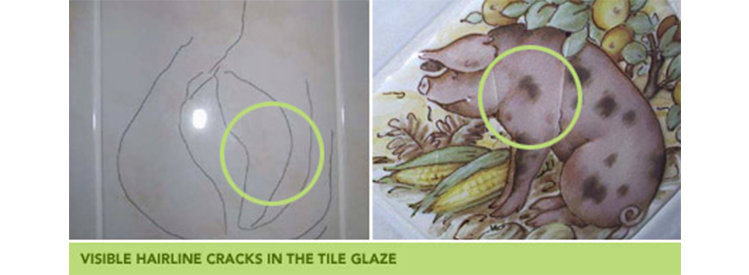
From time to time, small, hairline cracks can appear in the glazed surface of tiles. This phenomenon is referred to as 'crazing.' Tiles are not designed to craze, but it is a recognised inherent property that can occur with glazed tiles. A crazed tile will still perform properly and there is no reason for concern. Crazing can often be seen in old or antique pottery or chinaware.
If we consider that a tile is a glass surface on a clay background and when 'fired' in a kiln, the two materials bond; crazing can occur when the glass and the clay expand or contract at different rates in an installation.
The important issue is that a crazed surface is not a crack through the tile.
• As explained, crazing is an inherent property of ceramic tiles. Sometimes it just happens and can't be explained. But it is not detrimental to the performance of the tile.
• A heavily glazed tile that is subject to widely varying temperatures from in front and behind the tile may exhibit some crazing more easily than other tiles. The glaze and biscuit are expanding and contracting at different rates.
• It has been recorded that if a 'high bond' adhesive is used in a thick application behind a porous biscuit tile, it can effectively bend the tile. This can cause the glaze to craze.
• Continuous movement of a substrate or structural wall can also cause this phenomenon.
A crazed surface will not affect the performance of the tile. Generally, most people will simply ignore the issue.
If your project seems to have an extreme case, or it is personally annoying, then the only way to resolve it is the replace the tiles.
The cost to replace crazed tiles can't be charged back to anyone in particular.